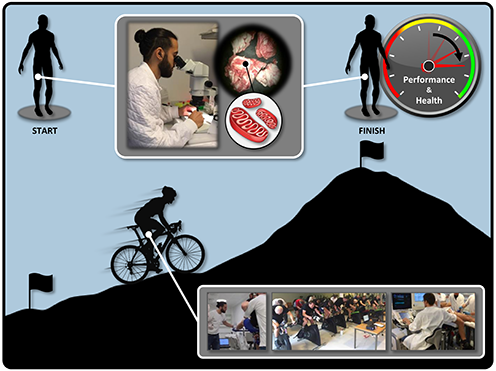PhD defence: Physiological mechanisms underlying performance- and health-enhancing effects of high-intensity exercise training in human skeletal muscle
Insights into mitochondrial adaptive responses

Matteo Fiorenza
PhD thesis
In recent years, high-intensity interval training (HIIT) has received considerable attention from the scientific community owing to its effectiveness in enhancing exercise performance and improving cardiovascular and metabolic health.
HIIT promotes a number of adaptations resembling those associated with traditional endurance exercise, including quantitative and qualitative changes at the skeletal muscle mitochondrial level. However, the mechanisms underlying these similar adaptive responses in spite of divergent exercise stimuli are not completely clear.
Hence, the examination of the skeletal muscle adaptive responses to HIIT with particular emphasis on the cellular pathways regulating mitochondrial quantity, quality and function would provide new insights into the physiological mechanisms involved in the performance- and health-enhancing effects of HIIT.
Thus, the overall purpose of this thesis was to investigate the acute and chronic effects of HIIT in humans with specific emphasis on the adaptations occurring in skeletal muscle mitochondria.
2019, 103 pages.
Time
3 May 2019, 11:00
Place
Università degli Studi di Verona, Dipartimento di Neuroscienze, Biomedicina e Movimento, Aula Magna Scienze Motorie, Via Casorati 43, Verona, Italy
Opponents
Associate professor Thomas Elbenhardt Jensen Department of Nutrition, Exercise and Sports, University of Copenhagen, Denmark.
Professor José Calbet Department of Physical Education, University of Las Palmas, Spain.
Assistant professor Silvia Pogliaghi Department of Neurosciences, Biomedicine & Movement Sciences, University of Verona, Italy.
Main supervisor
Professor Federico Schena Department of Neurosciences, Biomedicine & Movement Sciences, University of Verona, Italy.
Co-supervisor
Professor Jens Bangsbo Department of Nutrition, Exercise and Sports, University of Copenhagen, Denmark.
